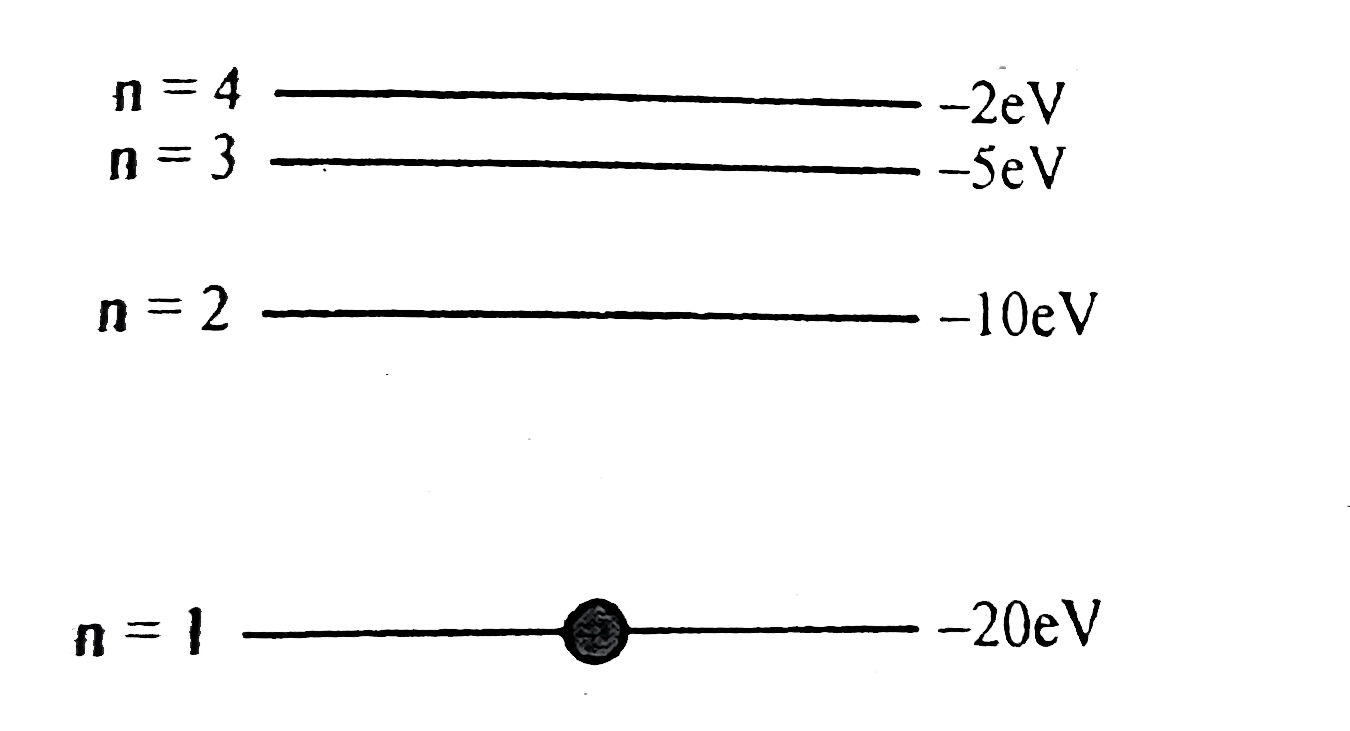Show that a moving electron cannot spontaneously change into an x-ray photon in free space. A third body (atom or nucleus) must be present. Why is it needed?
to conserve momentum
Topper's Solved these Questions
- ALL ABOUT ATOMS BOOK - RESNICK AND HALLIDAYCHAPTER - ALL ABOUT ATOMS EXERCISE - PRACTICE QUESTIONS (SINGLE CORRECT CHOICE TYPE)
57 Videos
- ALL ABOUT ATOMS BOOK - RESNICK AND HALLIDAYCHAPTER - ALL ABOUT ATOMS EXERCISE - PRACTICE QUESTIONS (MORE THAN ONE CORRECT CHOICE TYPE)
4 Videos
- ALL ABOUT ATOMS BOOK - RESNICK AND HALLIDAYCHAPTER - ALL ABOUT ATOMS EXERCISE - CHECKPOINT
1 Videos
- CAPACITANCEBOOK - RESNICK AND HALLIDAYCHAPTER - CAPACITANCEEXERCISE - PRACTICE QUESTION (INTEGER TYPE)
3 Videos
Similar Questions
(i) Show that a free electron at rest cannot absorb a photon and thereby acquire kinetic energy equal to the energy of the photon. Would the conclusion change if the free electron was moving with a constant velocity ?
(ii) If the absorption of a photon by a free electron is ruled out as proved in (i) above, how does photoelectric emission take place at all ?
View SolutionRutherford's α-particle scattering experiment showed that
(i) electrons have negative charge.
(ii) the mass and positive charge of the atom is concentrated in the nucleus.
(iii) neutron exists in the nucleus.
(iv) most of the space in atom is empty.
Which of the above statements are correct ?
View Solution
Knowledge Check
Rutherford's α-particle scattering experiment showed that
(i) electrons have negative charge.
(ii) the mass and positive charge of the atom is concentrated in the nucleus.
(iii) neutron exists in the nucleus.
(iv) most of the space in atom is empty.
Which of the above statements are correct ?A(i) and (iii)B(ii) and (iv)C(i) and (iv)D(iii) and (iv)Rutherford's α-particle scattering experiment showed that
(i) electrons have negative charge.
(ii) the mass and positive charge of the atom is concentrated in the nucleus.
(iii) neutron exists in the nucleus.
(iv) most of the space in atom is empty.
Which of the above statements are correct ?A(i) and (iii)B(ii) and (iv)C(i) and (iv)D(iii) and (iv)When an electron moving at a high speed strikes a metal surface, which of the following are possible?
(i) The entire energy of the electron may be converted into an X-ray photon
(ii) Any fraction of energy of the electron may be converted into an X-ray photon
(iii) The entire energy of the electron may get converted to heat
(iv) The electron may undergo elastic collision with the metal surfaceA(i),(ii),(iii)B(ii),(iii),(iv)C(i),(iii),(iv)Dall
What factor determines whether the crystal field in an octahedral complex is to be regarded as strong or weak? How many d-electrons must be present in orbitals of the central atom atom for there to be an abrupt change in crystal field stabilisation energy strong and weak fields gt
View SolutionWhat factor determines whether the crystal field in an octahedral complex is to be regarded as strong or weak? How many d-electrons must be present in orbitals of the central atom atom for there to be an abrupt change in crystal field stabilisation energy strong and weak fields gt
View SolutionIn an ordianary atom, as a first approximation, the motion of the nucleus can be ignored. In a positronium atom a positronreplaces the proton of hydrogen atom. The electron and positron masses are equal and , therefore , the motion of the positron cannot be ignored. One must consider the motion of both electron and positron about their center of mass. A detailed analyasis shows that formulae of Bohr's model apply to positronium atom provided that we replace me by what is known reduced mass is me/2.
If the Rydberg constant for hydrogen atom is R , then the Rydberg constant for positronium atom is
View SolutionThe energy-level scheme for the hypothetical one electron element Bansalium is shown in figure. The potential energy is taken to be zero for an electron at an infinite distance from the nucleus.

If a Bansalium atom is in ground state, which of the following photons cannot excite the atom to a higher state?
View SolutionIn an ordianary atom, as a first approximation, the motion of the nucleus can be ignored. In a positronium atom a positronreplaces the proton of hydrogen atom. The electron and positron masses are equal and , therefore , the motion of the positron cannot be ignored. One must consider the motion of both electron and positron about their center of mass. A detailed analyasis shows that formulae of Bohr's model apply to positronium atom provided that we replace me by what is known reduced mass is me/2.
If the Rydberg constant for hydrogen atom is R , then the Rydberg constant for positronium atom is
View Solution
